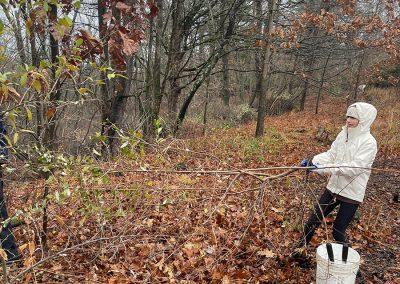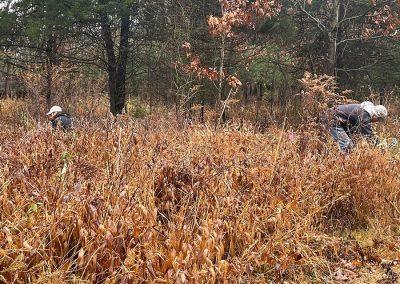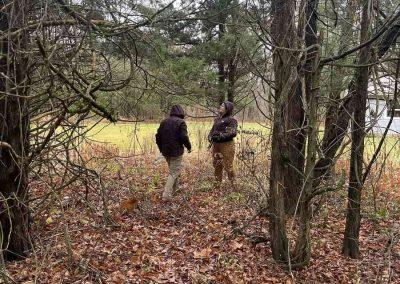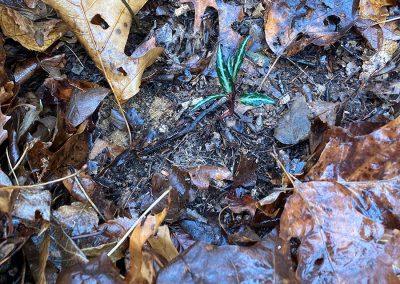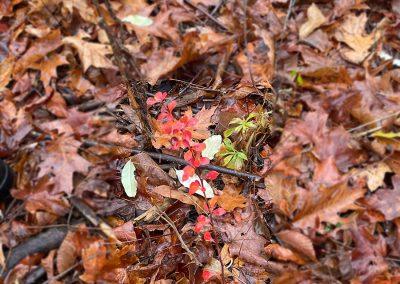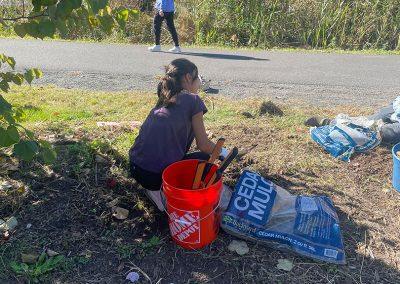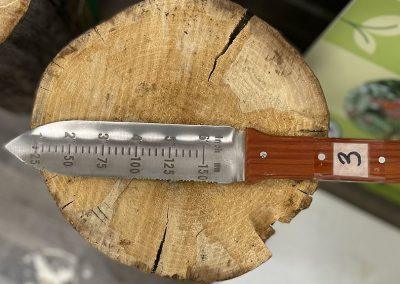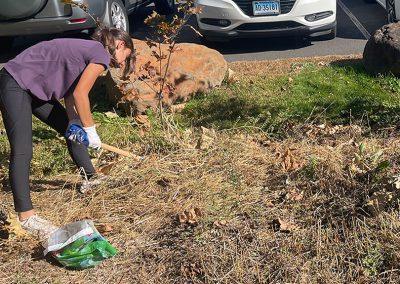Growing Green: Saige’s Volunteer Adventures with the Southington Land Trust
Recycling Christmas Trees
Burning Christmas trees releases carbon dioxide that is kept in the tree back into the atmosphere, causing an increase of greenhouse gases and contributing to climate change. Burning trees also releases fine particles that affect the air quality and can increase the risk of wildfires. Instead, the Southington Land Trust brings Christmas trees to a recycling facility, so the trees can be repurposed. The discarded trees can also be used to help animals. I learned that goats, sheep, and chickens love to eat pine needles and pine tree bark because of their taste. People will also place their trees out in the woods to allow for rabbits to make little shelters during the winter months. When Christmas trees get put through wood chippers, there are also more eco-friendly uses, such as mulch, composting, and firewood.
During the Southington Land Trust’s Christmas Tree Recycling Fundraiser, two other members of the Land Trust and I picked up 13 Christmas trees. While this may seem like a small amount, we were one of many group members picking up Christmas trees all day. The fundraiser was a great way to raise awareness and learn about sustainable tree recycling. We are grateful to the many residents of Southington who donated to have their Christmas tree collected by the Land Trust.
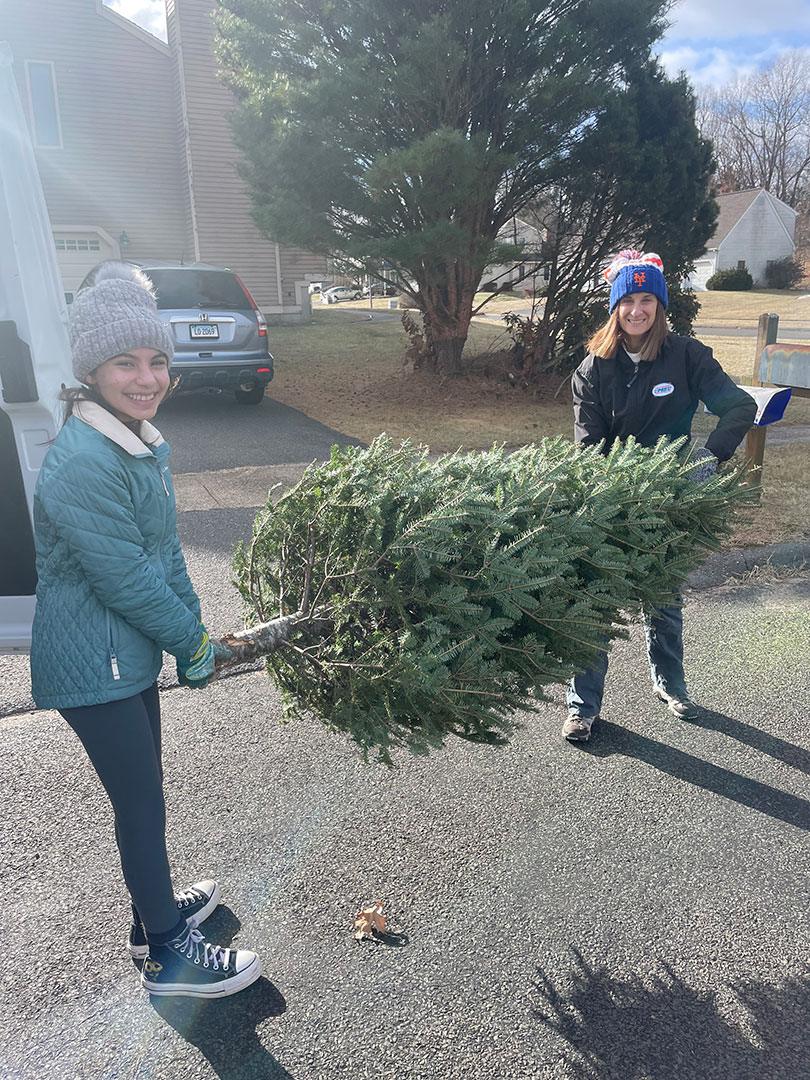
The Johnson Property
It’s Saige again, and this time I volunteered with the Southington Land Trust at one of their properties. The Niles and Linnea Johnson Family Wildlife Sanctuary used to be part of the Johnson family farm before it was donated to the Land Trust during the highway construction of I-84. During my second volunteering session, I learned how members of the Land Trust are dedicated to permanently conserving land, not even letting cold temperatures and rain getting in the way of their mission.
On this raw November day, I cleared small Autumn Olive shoots from the ground and helped members cut down large Autumn Olive trees. Autumn Olive is a native shrub from Asia that has spread into the U.S. as an invasive plant. I was able to identify Autumn Olive plants from the light green color of the top of their leaves and the silverish-white color on the bottom. I also learned that during cold fall days, if a plant is still thriving, they are most likely invasive. This is true because invasive plants take advantage of the extra sunlight and extend their growing season. Clearing the Autumn Olive plant was important because it would prevent native plants from growing and severely disturbing the health of our ecosystem.
Once again, it was inspiring to see different groups of people come together because they share the same mission as members of the Southington Land Trust. In addition to helping maintain a balanced ecosystem, I also learned helpful tips to stay warm on days like this rainy, frigid, Saturday. The first thing I learned was wearing rubber gloves under my gardening gloves would help keep my hands warm and dry. I also learned that when working in the cold, it would be smart to wear ski socks! These two hours at the Niles and Linnea Johnson Family Wildlife Sanctuary flew by as I gained knowledge about the environment and actively preserved the ecosystem with the help of the Southington Land Trust.
Pollinator Pathway
I’m Saige, a teenage girl who decided to start my first blog to document my volunteer service assignments. I volunteer at the Southington Land Trust, a non-profit organization where the community comes together to help conserve land.
My first volunteer assignment was weeding the Linear Park – Rails To Trails in Southington on a warm October day. I learned about the different types of garden tools such as a Japanese Hori Hori, also called the “murder tool.” Due to the garden tool’s knife-like shape and how effective it works cutting through weeds, I realized why it had earned its nickname. Weeding with these tools was way more effective than weeding by hand!
I also learned about the importance of pollinator plants through weeding a pollinator pathway. When these plants bloom, they produce nectar and pollen which feeds birds and insects. I quickly realized that working hard to protect these plants will help keep species alive and healthy. During my first time volunteering we were specifically pulling out mugwort, an invasive plant, from previously planted native plants. We weeded out this invasive plant because they are preventing native plants from growing, starting a chain reaction that is dangerous to the ecosystem.
By the end of the session, multiple people who were walking on the trail thanked us for our service. They not only inspired me to keep working through the hot weather but showed me how many people appreciate our efforts to conserve the environment. Volunteering at the Southington Land Trust is a great way to learn more about the environment and how to improve it!


